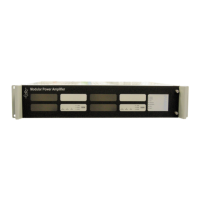iPAM400 – Product Manual
U-0629-0171.doc – Issue: 04 complete, approved
Page 18 of 138
Figure 3 Interval between surveillance tones
Tone Tone
Interval
1) A typical system is configured to accept pulses of 1 second every 20 seconds. Once set,
the system must see pulses at this interval or more regularly. If pulses are not received
within this interval a fault will be reported.
2) The iPAM400 temporarily superimposes a continuous surveillance tone on its outputs
when requested by the amplifier motherboard. This happens during the fault diagnostic
process. When the amplifier motherboard detects a fault, it requests the iPAM400 to
superimpose a continuous surveillance tone on the required output for the duration of
the diagnostic process in order to be able to isolate the faulty lines quickly.
3) The design ensures that indication of a fault is made within 100 seconds of the
occurrence of the fault regardless of whether the surveillance tone is active at the time.
2.4.3 Loudspeaker Line Monitoring using DC Surveillance
2.4.3.1 Loudspeaker Line Monitoring
Open circuit and short circuit faults on loudspeaker lines are detected by the measurement of a small
direct current through ASL EOL10K End Of Line resistors
1
. One EOL10K resistor is required in parallel with
the terminations of the last physical loudspeaker of each loudspeaker line. Any associated spurred cabling
runs require additional EOL10K resistors to be fitted.
The system caters for a minimum of one EOL10K resistor per loudspeaker circuit. Each circuit in multiple
circuit configurations can have different number of EOL10K resistors (or spurs) provided that the total
number of EOL10K resistors (or spurs) per amplifier slot does not exceed ten; see example in Figure 4.
The number of EOL10K resistors fitted is configured during system commissioning.
All loudspeakers connected to the system must be fitted with DC blocking capacitors; see Section “2.4.3.2
DC Blocking Capacitor Values” (page 21).
For further details of the End of Line Resistors and DC blocking capacitors, please refer to EOL10K user
documentation; see Table 7 (page 132).
1
EOL resistors must be of the high stability ASL EOL10K type.

